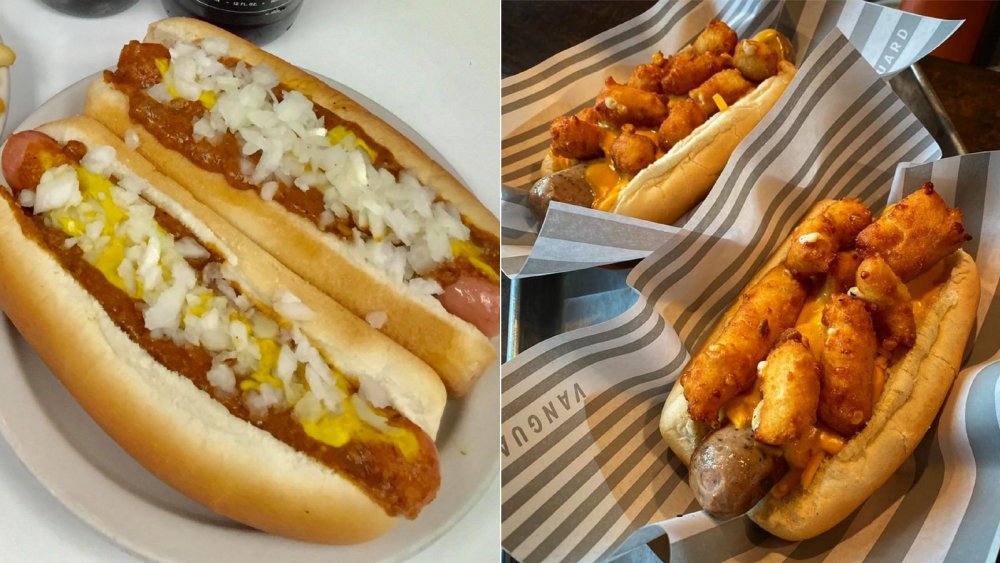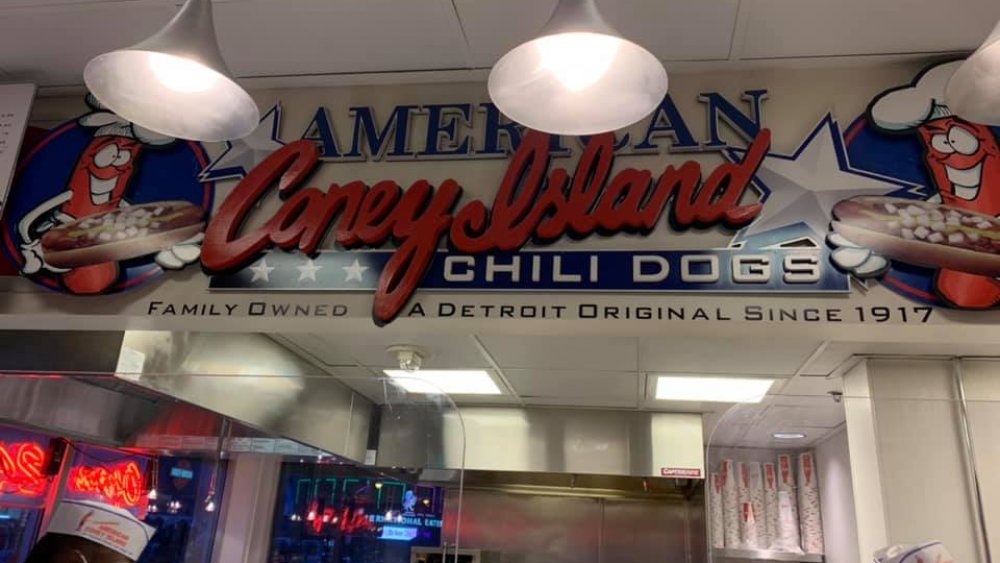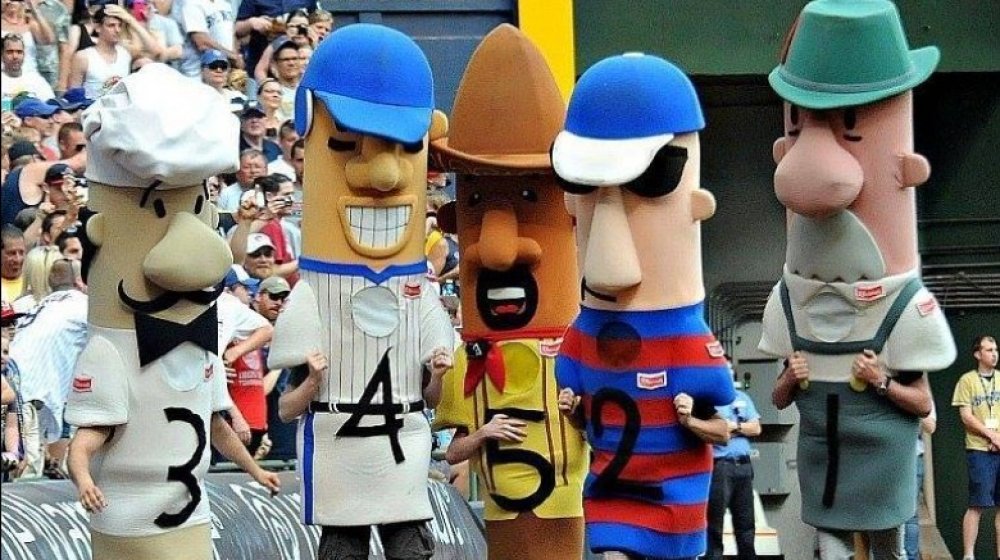The Real Difference Between Detroit And Milwaukee Style Hot Dogs
If you think of cities that have a long and storied history involving the humble hot dog and a culinary tradition that elevates it to iconic street food, there are really only two that stand out: Chicago and New York. If you're a true connoisseur of hot dogs and regional cuisine, you might be conversant with such exotic variations as the Mexican/Arizonan Sonora dog or the Hawaiian puka dog. Guy Fieri fans (and residents of the nation's smallest state) may also be familiar with hot wieners (via Food Network), while Beltway insiders all know about the half-smokes at the legendary Ben's Chili Bowl (where The Washington Post says you're always guaranteed a meal on the house if your name is either Obama or Bill Cosby. Not sure if the latter can get delivery at his current residence, however).
Two Midwestern cities not named Chicago are less well known outside their immediate areas for their own tube steak traditions, however: Detroit and Milwaukee. (In the latter case, most of the city's residents are also unaware of any such thing).
The semi-famous Detroit Dog
Detroit Dogs are a sub-specialty of a type of hot dog called the Coney dog – which you'd think would come from New York, right? Like, Coney Island, home of Nathan's Famous (and second home to Joey Chestnut, since the man's got to be about 90 percent hot dog by now). Well, the Detroit Historical Society says no, Coney dogs are (maybe) a Michigan original. The first Coney dog stand, Todoroff's Original Coney Island, opened in Jackson, Michigan in 1914, but the two places offering the most authentic Detroit Dog experience are the Motor City's own American Coney Island (opened in 1917) and Lafayette Coney Island (1924). Both restaurants serve what they claim to be the best, and most authentic, Coney dogs using made-in-Michigan Dearborn Sausage franks, but the difference lies in the chili they're topped with – Lafayette's is said to be beefier, while American's is spicier. Both have their passionate partisans, making theirs one of the great food rivalries right up there alongside Pat's vs. Geno's cheesesteaks in Philadelphia.
If you want to make your own Detroit Dogs, you'll need a beanless chili (Simply Scratch has a recipe you can use, or you could try a can of no-bean chili such as Skyline). Steam-cook your hot dogs, bun them, then top with a generous helping of chili, yellow mustard, and chopped onions.
The really-not-a-thing Milwaukee dog
Milwaukee is actually not much of a hot dog town, as its German heritage assures that wurst will always come first (via The Spruce Eats). While brats reign supreme, sausages of any stripe sell well. According to the National Hot Dog and Sausage Council, Miller Park, home of the Milwaukee Brewers, is the only major league stadium where sausages outsell hot dogs. That isn't to say that the stadium – and the city – has no love for the tube steak. Hot Dog is represented among the team's famous Racing Sausages, after all, taking his place in the wiener's circle just as often as his brothers Italian, Polish, Brat, and Chorizo.
If you're looking for a real, authentic, Milwaukee-style hot dog, however, there really isn't any such thing. Googling the phrase brings up a Betty Crocker recipe for cheese-topped bratwurst (Milwaukee is in the Dairy State), while The Daily Meal notes a Milwaukee Dog specific to the city's Vanguard restaurant. This not-so-historic hot dog may not even involve said dog, as you can order it with any of the numerous sausages they carry, but it again involves topping the meat with cheese – cheddar, in this case (Betty specified Swiss), along with Cheez Whiz (a product the Wisconsin State Journal says was developed by a Wisconsin man) and the state's ubiquitous deep-fried cheese curds. Wash it down with a Miller High Life (it's the champagne of beers, ya know) and that's about as Milwaukee as it gets.


